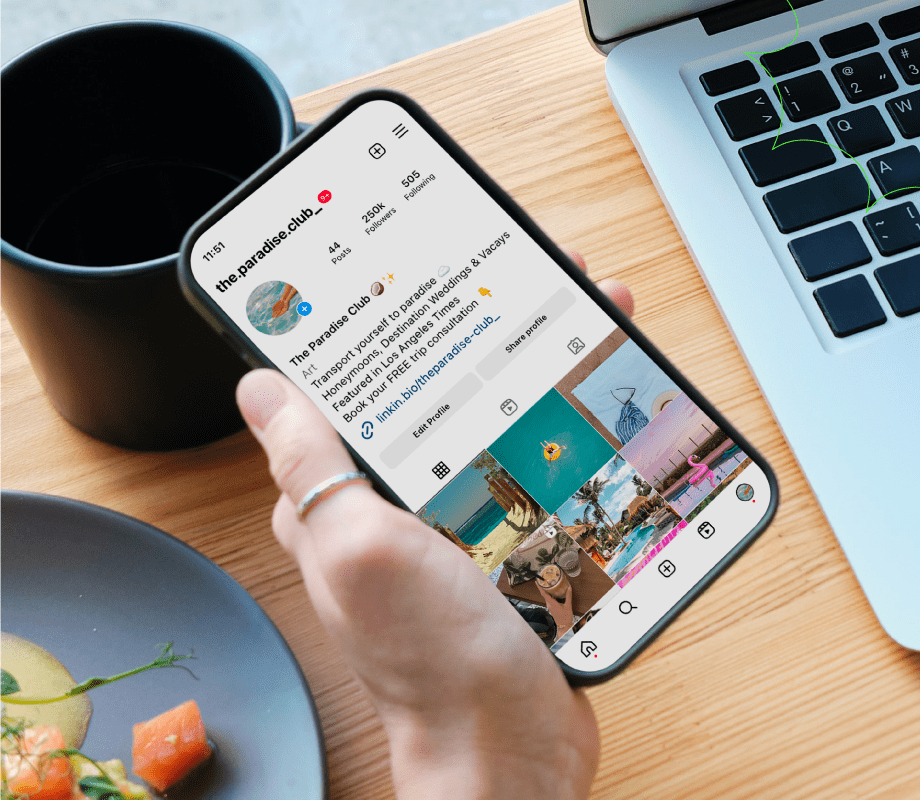Filtering failed to affect the amount of content production and visits to public and commercial Instagram pages.
According to IDEA, over the past year, authorities have employed various methods to restrict the internet, but statistics indicate that at least Instagram filtering has failed to have any impact on the popularity of this social network among users and businesses. Just as Telegram filtering in 2018 did not lead people to remove this platform from their smartphones.
Last year, Iranian Telegram channels’ posts were viewed 590 billion times, and on Persian Instagram, 440 million posts were published, receiving 291 billion likes.
According to this report, more than 70% of people continuously use social networks, and social networks have become an integral part of people’s daily lives. On average, each Iranian user follows more than 275 public pages on Instagram, and despite filtering last year and serious disruptions, the presence on this social network experienced an upward trend.
According to Zelka statistics, in 2021, there were 36 million personal pages on Persian Instagram, which increased to over 41 million pages in 2022. This is while the number of Instagram pages in 2020 was about 31.5 million. This increase indicates that the growth of these pages in 2022, despite the filtering of this social network, was greater than the growth during the time when it was not yet filtered. There are also more than 6.3 million public pages on Persian Instagram.
This statistic has also concluded, by examining more than 9,000 active businesses in various guilds and associations, that 94% of Iranian businesses have a presence on Instagram. After Instagram, Telegram has accommodated the most businesses with 72%.
The Impact of Filtering on Instagram
Usage The user interaction graph on Instagram shows that the most significant impact of filtering was on the number of video views. At the beginning of last year, Instagram video views exceeded 35 billion times, which decreased in July to about 30 billion times. Then, until September, it increased to approximately 40 billion times.
After the filtering of this network, the number of views decreased to about 25 billion times in October and continued to decline to just over 15 billion times in November. However, after that, an upward trend resumed, and by the end of last year, video views exceeded 30 billion times. Nevertheless, filtering did not have a significant impact on the number of comments during this period, and the number of comments even increased in October, reaching its highest level of the past year.
On the other hand, the number of likes on Instagram had its ups and downs under the influence of filtering policies. The lowest number of likes was in the month of Mordad, with more than 20 billion likes, which was a time when this platform faced significant disruptions. After that month, the number of views increased, and even filtering in Shahrivar couldn’t halt this upward trend.
The number of likes also reached around 35 billion in Mehr month, but then it decreased, reaching approximately 25 billion in Aban month. Ultimately, in Esfand of the previous year, the number of likes did not show much difference compared to Farvardin month.
Experience with Telegram Filtering Last year
Over 660 million posts were published in Telegram public channels, and on average, each Iranian user liked more than 7,000 posts. More than 521 million posts were published by 870 thousand channels, which were viewed 593 billion times.
Telegram Farsi was temporarily blocked in Dey 1396 and was finally permanently filtered in Ordibehesht 1397. At that time, a judicial order from the Tehran Prosecutor’s Office required it to be filtered in such a way that it couldn’t be accessed even with tools like VPN.
However, a few months later, surveys showed that many people were still using Telegram even after it was filtered. According to an Ipsa poll conducted in Esfand 1397, 71% of the age group of 18 to 29 still used Telegram.
At that time, the use of Soroush messenger was only 4%. The former Minister of Communications announced a month after Telegram was filtered that only one million people had removed the application from their phones.
Abdolsamad Khoramabadi, the secretary of the Committee for Determining Criminal Content, had declared in 1397 that professional activity on the Telegram platform was prohibited, and online businesses had to move their activities to domestic social networks.
Despite this, in these few years, despite filtering and disruptions that were created for proxies and VPNs, the number of Telegram users and their usage continued to increase.
After extensive filtering in Shahrivar 1401, the Beta Research Center announced that from mid-Shahrivar to mid-Mehr, visits to Telegram posts had more than doubled, increasing from about 1.2 billion visits to about 2.8 billion, right from the time when restrictions intensified with the filtering of two major products, Instagram and WhatsApp.
The filtering of WhatsApp brought many users back to Telegram, especially since after Shahrivar, the number of Telegram proxy channels increased fivefold, and the total visits to the posts of these channels reached 6 billion from 2 billion.
In Dey of the past year, the Life Web Data Analysis Center published data showing that the intensification of filtering and the unavailability of VPNs had led to an increase in the members of Telegram proxy channels and growth in their visits.
The data from the Yektanet report also indicate that the monthly number of views and the amount of content published in Persian Telegram decreased in the first couple of months after the restrictions intensified and VPNs were continuously disrupted. However, almost from Aban and Azar, there was a resurgence, and by the end of the year, it exceeded even Farvardin.
Filtering did not reduce the presence of businesses on foreign social networks According to Zelka statistics, there are more than 650,000 active public stores on Persian Instagram, including businesses in the fields of fashion, clothing, beauty and health services, food and restaurants, home and kitchen.
The number of Instagram stores in the country is one-fourth of the total European Union. Previous statistics, such as Beta’s, indicate that many of the Instagram pages dedicated to commercial activities belong to home-based, local, and informal businesses.
Furthermore, more than 90,000 Telegram channels also sell their products, with the majority of them specializing in fashion, clothing, and digital goods. The number of store channels on these two platforms is several times that of domestic platforms. In Soroush Plus, with over 180,000 active channels, only 15% are store-related. In Rubika, the social network of Rubik, more than 26,000 stores are also active.
Instagram stores, like Telegram channels, learned to continue their activities using VPNs after filtering. The number of content they published dropped for about a month after filtering, but after Mehr month, an upward trend was experienced, and in Esfand month, it reached approximately the same level as Farvardin.
Is the internet becoming expensive for us? Report from Tehran E-Commerce Association: Iran, the champion of internet restrictions, disruptions, and sluggishness About a year has passed since the intensification of filtering, and these statistics confirm that filtering has only increased the cost of using the internet and has opened the door to VPNs for a larger portion of the population.
According to Zelka and Emrc statistics, the use of VPNs is very high among different age and educational groups. During this period, government support for domestic messengers has not had much impact on people’s reluctance to use local alternatives. Ultimately, it seems that filtering over the past year has not been able to cut off access but has made it more troublesome and expensive.






No Comment! Be the first one.